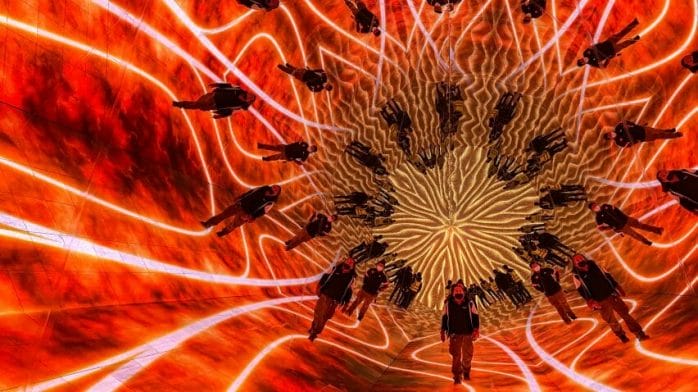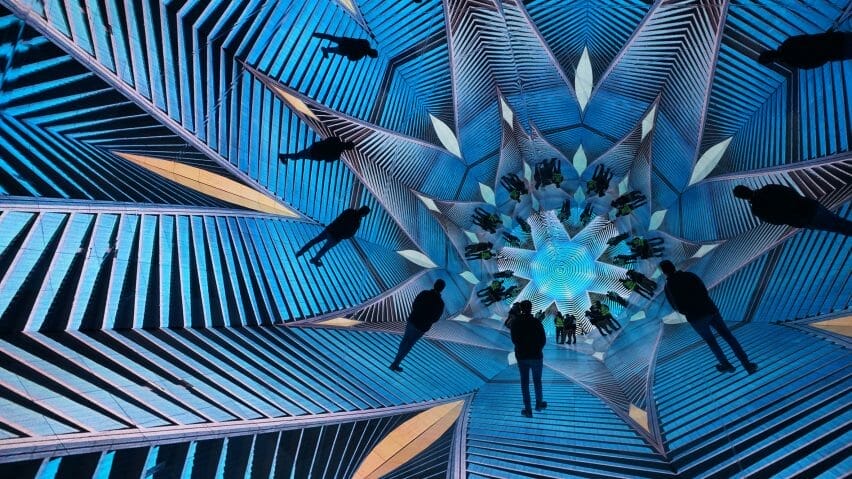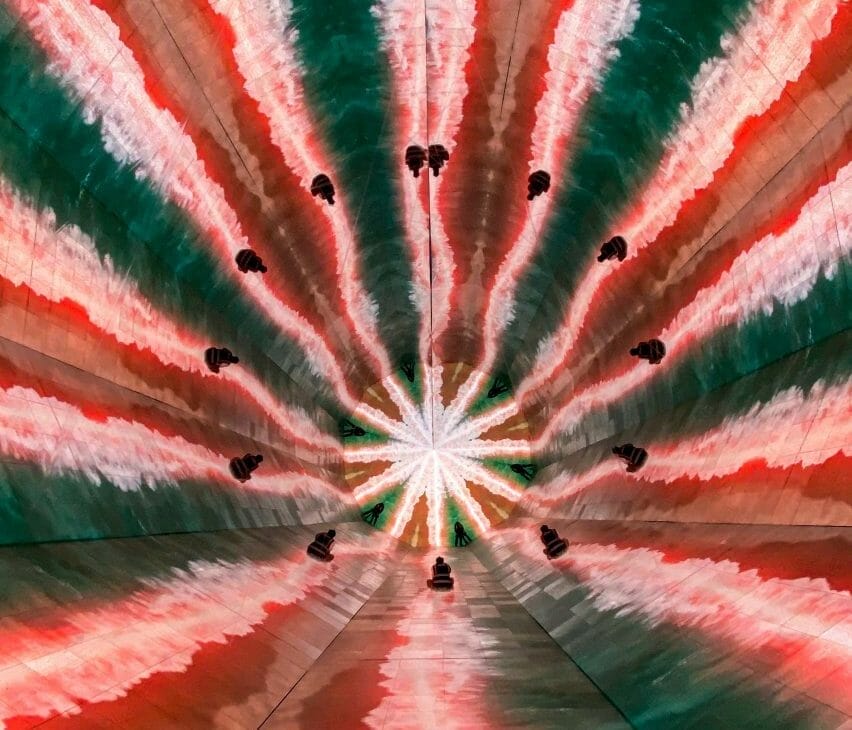The conference where tomorrow’s technologies are explored today, was the setting for the unveiling of a kaleidoscope installation by STUFISH that we think gives visitors to the conference a peek into the future of technology. The kaleidoscope is 40 meters long and 6 meters high, making it the world’s largest of its kind. The first edition of Leap is a great success held at Riyadh in February 2022, bringing together more than 100,000 attendees from around the world to discover what’s next for technology and humanity.
STUFISH are entertainment architects who are interested in pioneering work, exploring new ways to inspire audiences and visitors. They work on musical experiences such as rock operas, exhibitions, theatrical shows, and buildings.

The installation brings together space-age technology, including robots and projection-mapping, with a playful and accessible art form the kaleidoscope. Projection mapping allows the sculpture to change shape, from a jagged metal building to a gleaming robot, to a giant starburst.
The kaleidoscope was installed in Riyadh and provided guests with a walk-through, immersive experience.

“We created the kaleidoscope to honour the rich history and culture of Saudi Arabia, and to enable young people around the world to learn more about it.,” explained Stufish CEO Ray Winkler in a statement.
The world is getting to the point where technology is allowing us to produce more immersive, holistic experiences for our customers. Stufish had made this immersive display that reflected Saudi Arabia’s natural environment visual and audio effects.

The LED tiles and tensioned mirror foil allowed Stufish to produce a seamless and warp-less finish. The imagery on the LED tiles is layered with digital effects and reflects off the mirrors to produce a kaleidoscope effect.
The firm developed the kaleidoscope by utilizing 3ds Max software and virtual-reality headsets to verify the effect internally. They also used these tools to produce the content and ensure that the patterns are effective, that the transitions are fluid, and that the changes to the environment are not so aggressive as to make one sick.
Picture credits: Dezeen




















